Lobbyists Push To Excise Family Friendly Internationally Loved Tourist Beach
Over the past months, weeks and days of this week residents have forwarded photographs of dogs off-leash in wildlife areas or on beaches where fauna lives, reports of dogs attacks that seem to be increasing, most of them by dogs off-leash whose owners quickly run away or are completely absent from the scene of the incident, a high number of photographs of dog faeces everywhere you go and incidents of young children being knocked over or frightened by dogs off-leash in non off-leash public areas.
The proposed changing of Station Beach to a dog off-leash area features as their core theme.
As many of these communications are accompanied by a request to withhold names due to those who speak out being targeted by a local dog lobbyists group, and being stalked outside their private homes, targeted in online social media posts with their phone numbers and emails being published as part of those with sly incitements to 'attack', a precis of their concerns runs below.
They can be listed, apart from reiterating the over 30 Monitoring and Mitigation Measures recently published in the REF of May 2019 as
- Station Beach forms part of a tourist area attracting hundreds of thousands of visitors a year who will not want to walk in, swim in or sit in, nor do we want them to report back home a lot of;
- Dog Faeces - may contain diseases and can cause infections as well as pollute the environment and attract;
- Sharks - studies show you should not swim with dogs or in areas where dogs have been
- Dog Parks excise these areas from everyone else - little children cannot play there, all other forms of recreation cease in these areas, compounded by dog owners claiming this is their area only, while any fauna is chased out because dogs are, in fact, hunters
- Fauna - a large section of residents are completely fed up with people taking dogs into areas where wildlife lives, off-leash, ignoring clear signage and placing these animals at risk from stress or attacks
This month the latest film from Rachel Ward featuring husband Bryan Brown and a host of friends is being released – it’s title, ‘Palm Beach’. This is not the first time Palm Beach and our area has been the setting for a film, there have been numerous instances dating back as far as film itself.
In the visually stunning world wide acclaimed movie Oscar and Lucinda from the Booker Prize-winning novel by Peter Carey there is a scene where Cate Blanchett is gambling and the actors talk of taking a steamer to Pittwater.
Sydney was named a UNESCO City of Film in 2010
The use of the idea of going to Pittwater is not misplaced. As early as 1862 and later in the 1880’s newspapers are reporting ‘Excursionists’ travelling to…. Pittwater…by their thousands and alighting at Newport Wharf and at …Barrenjoey. The tide of people travelling to spend a few hours or a few days here only increased. They came by steamers, by horse drawn coaches and even on foot.
At a meeting at Newport on Saturday a resolution was passed stating that the time had arrived when Manly and Pittwater should be connected with North Shore by railway. Mr. Burns, M L A , said that between January and May of this year one Sydney company had booked as many as 5000 passengers to Pittwater on excursion days by one line of steamers. The present population of Manly was about 4500. .... The Sydney Morning Herald. (1890, June 23). The Sydney Morning Herald (NSW : 1842 - 1954), p. 4. Retrieved from http://nla.gov.au/nla.news-article13799842
Five thousand over a few months had become a thousand in one day by 1896, and this was just on the steamers:
OCEAN EXCURSIONS.
For the holiday the Newcastle and Hunter River S S Company put on two of their best boats for the Hawkesbury River trips, the Newcastle running to Cowan Bay, and the Namoi to Newport, Pittwater. Notwithstanding the prospect of a rough trip the steamers took close upon 1000 excursionists between them... OCEAN EXCURSIONS. (1896, November 10). The Sydney Morning Herald (NSW : 1842 - 1954), p. 5. Retrieved from http://nla.gov.au/nla.news-article14074776
For everyone in Sydney going to Palm Beach is still what happens during Summer - anyone who lives along the stretches of the Barrenjoey road knows this. If any of us sometimes forget and get to the end of our driveways, then see the traffic just sitting there bumper to bumper from Newport's hill to Governor Phillip Park, we just back that vehicle up and wait until after dusk or venture out just after dawn.
During the 1980's we could all adopt a 'swim where you like' easiness to this Summer phenomenon, knowing the cooler months and rougher seas would return these pristine areas to those who live here full-time.
By the early 2000’s visitors to Palm Beach, drawn by the Castles in the Sand fundraiser spectacles and bringing their children to see the sandcastle sculptures, rose. One report states that by 2005 20, 000 people were coming to have a look. As Pittwater, in 2011, had only around 35,000 residents, you can imagine how crowded it was getting on the beach and roads leading to and from Palmy. The most recent Surf Life Saving New South Wales figures for people visiting beaches reported 7 million people, of this total 4,679,380 visited Sydney beaches.
Still, in the 1980's to early 2000's we clung to Winter's solitude and silence and emptiness, knowing that would come.
This is no longer the case.
In the middle of Winter, at 9 a.m., locals are likely to run into visitors from all lands overseas asking the best way to get to Barrenjoey Lighthouse, their phones in hand with maps of Station Beach. Others are out looking for whales for two thirds of the year - ourselves among them. We watch them swim north and then we watch them swim south. Then there's the just married couples and wedding parties seeking a peerless Pittwater backdrop for their Marriage Photographs in a quieter, less windy corner.
And why wouldn't they - this is a place where we value our beautiful natural environment and want to protect the native flora and fauna and this shows and has added to making this place attractive to visitors.
The figures back this up. The latest statistics published by the NSW Government’s Destination NSW in March 2019 list the details and point to millions visiting, Sydney's Manly Beach and…. Palm Beach.

All year round, from early in the morning until late afternoon and even during the evening, people are going to Palm Beach. They come from all over Sydney, New South Wales, and the world.
Add to these the official population of Northern Beaches Council area as of the 30th June 2018, of 271,278 and it becomes apparent these public spaces have become much treasured commons for all.
The millions of domestic and international visitors spend billions of dollars and vote that is is a 5 star place on tourism websites, so more and more come.
They come for the cleanness, the openness, the sailing, the bush walks, the paddling, the safe corners for toddlers away from the ocean and out of the wind. They come for the environment - to see the whales, penguins, seals and shorebirds in their very own homes.
Even residents have a great love for our shorebirds - the thousands of participant 'counts' in each annual BirdLife Australia Backyard Bird Count weekend bears testament to that. The Pittwater estuary is a foraging and roosting habitat for these birds.
Many shorebirds are migratory travelling up to 26,000 km each year between Australian and their breeding grounds in Siberia, northern China and Alaska. A total of 63 shorebird species have been recorded in NSW (Smith 1991). Thirty-four species are considered to occur in the Sydney region and most of these live or migrate to here.
Then there are all those ground dwelling saltwater visitors of many coloured feathers. It's a Birders (or Twitchers) paradise!
Our local Birdlife is in trouble though - shrinking habitat from developers encroachments, discarded plastic bait bags, fishing lines and hooks and dog owners who think Fido romping off-leash through the local creek, wetlands and foreshores and chasing them doesn't do any harm and that any faeces or urine left behind will 'wash out with the tide'.
There are numerous studies, dating back decades now, that explain the affect of dogs in wildlife habitat. Some examples are listed under the References below. One instance points out that dog scents or 'leavings' in bird habitat (their dining room and bedroom) causes high levels of distress as the dog is perceived as a hunter, which they are when chasing the birds, a tendency to abandon a nest and young ones and, if continued, abandoning an area altogether.
A comparison of the microbial loads showed that 1 dog faecal event was equivalent to 6,940 bird faecal events or 3.2 × 108 shrimp faecal mounds. Microbial Load from Animal Faeces at a Recreational Beach – NCBI by ME Wright - 2009. Available at https://www.ncbi.nlm.nih.gov/pmc/articles/PMC2771205/
Dog owners leaving their dog's faeces behind on sporting fields, on pavements in shopping centres, on sidewalks through suburban streets, on nature strips beside our beaches and even on the foreshores has become a talking point. Owners scooping dog doos up in plastic bags and then leaving that behind as well features in many a social media post - Pittwater Online receives photographs with time and place for these every second day.
Australian dog owners are among the best in the world at looking after their canines; we ensure they are given everything they need to keep them worm and parasite free and healthy. However a 2017 Queensland study, the first done for a while, collected dog faeces from parks, beaches and public thoroughfares and found in the samples
Intestinal parasites detected included hookworms (25%), Cystoisospora ohioensis complex (9%), Blastocystis hominis (3%), Giardia duodenalis (3%), Spirometra erinacei (1%) and Toxocara canis (1%), Sarcocystis spp. (2%), Cryptosporidium spp. (2%) and Cystoisospora canis (1%). One infection each with Trichuris vulpis, Dipylidium caninum and a protozoa belonging to the Entamoeba histolytica complex were identified. A Survey of Intestinal Parasites of Domestic Dogs in Central Queensland. Simone Gillespie and Richard S. Bradbury. October 2017. Available at: https://www.ncbi.nlm.nih.gov/pmc/articles/PMC6082058/
Cases of these parasites in New South Wales have fallen dramatically. Elsewhere, in civilised Miami as one example, dogs are allowed on the beaches and do their business. Residents and visitors have experienced hookworm burrowing through their feet from infected sand, one teenager contracting a staph infection from the hookworms.
In the United Kingdom one gentleman lost his leg due to dog faeces being left on a playing field. Collin Smith had to have his leg amputated after falling while playing rugby and a wound being infected.
"The toxicology report showed the infection was due to animal faeces, and it was later diagnosed as dog excrement, which had been on the playing field," the former rugby player explained in a 2018 interview to back up calls all over the U.K. by residents and councils doing their utmost to stem the U.K.s rising dog faeces tide.
The reports of dog faeces everywhere are pleasant in comparison to the now daily reports of dogs, off-leash, attacking other dogs, killing pet birds, killing wild birds or simply running up to and jumping on or darting at and scaring young children in public spaces or even at dog parks.
An extract from one email:
I live in Sandy Bay, Clontarf. It's a small beach which became an off-leash dog area under Manly Council some 20 years ago. It has ruined Sandy Bay as a place for the enjoyment of all. Now dogs dominate the area and non-dog people - especially children - have no place. It was a great family beach, especially for toddlers but that has long gone.
Dogs come from all over the North Shore, from as far as Chatswood, Epping, Willoughby, Beacon Hill and Elanora and they are only the ones we know about. We have counted 40 dogs on the beach at peak times.
They leave after about an hour and are then replaced by more. As well, professional dog walkers arrive with 6-8 dogs in their van. Sometimes several arrive at the same time and the result is cacophony and chaos.
Worse than the dogs themselves are the attitude and behaviour of the dog's owners. They are the most aggressive, rude, uncaring people it's been my misfortune to come across. They WILL take advantage of everything the Council gives them and then take more.
I notice there are time limits proposed for Station Beach. You will find they won't be enforced by Council after the initial honeymoon. ...they will also spread outside the allowed area and those rules will also not be enforced. Anybody using the grassed areas or beach will need to be careful to avoid dog faeces. Most owners pick up after their dog but when 300 dogs a week visit, even 2% who do not pick up provides enough unpleasant surprises.
An example of what happens: I went walking on the beach with my 3-year-old grandson who was knocked over by the (friendly) wagging tail of a very large dog. As I picked him up, I asked the owner politely to control his dog (off-leash still requires dogs to be under control). He replied "Get your kid off the f....ing beach, mate! This is a dog beach not a kid beach!"
I would advise you to fight this to the end because it will be the death of your beach as a place of enjoyment for all.
This email brought up a common thread through many of the communications received - any area that is designated to be an off-leash area for dogs soon becomes a dogs only area. These spaces are, in effect, excised from the rest of the residents and visitors for the exclusive use of a few. The response this person received from the dog owner is, sadly, a common experience - not a rare one.
As more and more people, after their dog has been attacked, abandon going to these off-leash areas as well, they become a formerly public space put aside for the use of a few.
The resident wildlife in its kitchen, bedroom and nursery, is an inconvenience.
The resident toddlers are an inconvenience.
The millions of domestic and international visitors are an inconvenience.
Those objecting to dog faeces everywhere are an inconvenience.
The tour operators are an inconvenience.
The paddlers, sailors and surf life savers in training are an inconvenience.
The weddings parties and picnickers are an inconvenience.
They are all being chased out - by the dog owners and their dogs.
They are being served their eviction notice - they must go.
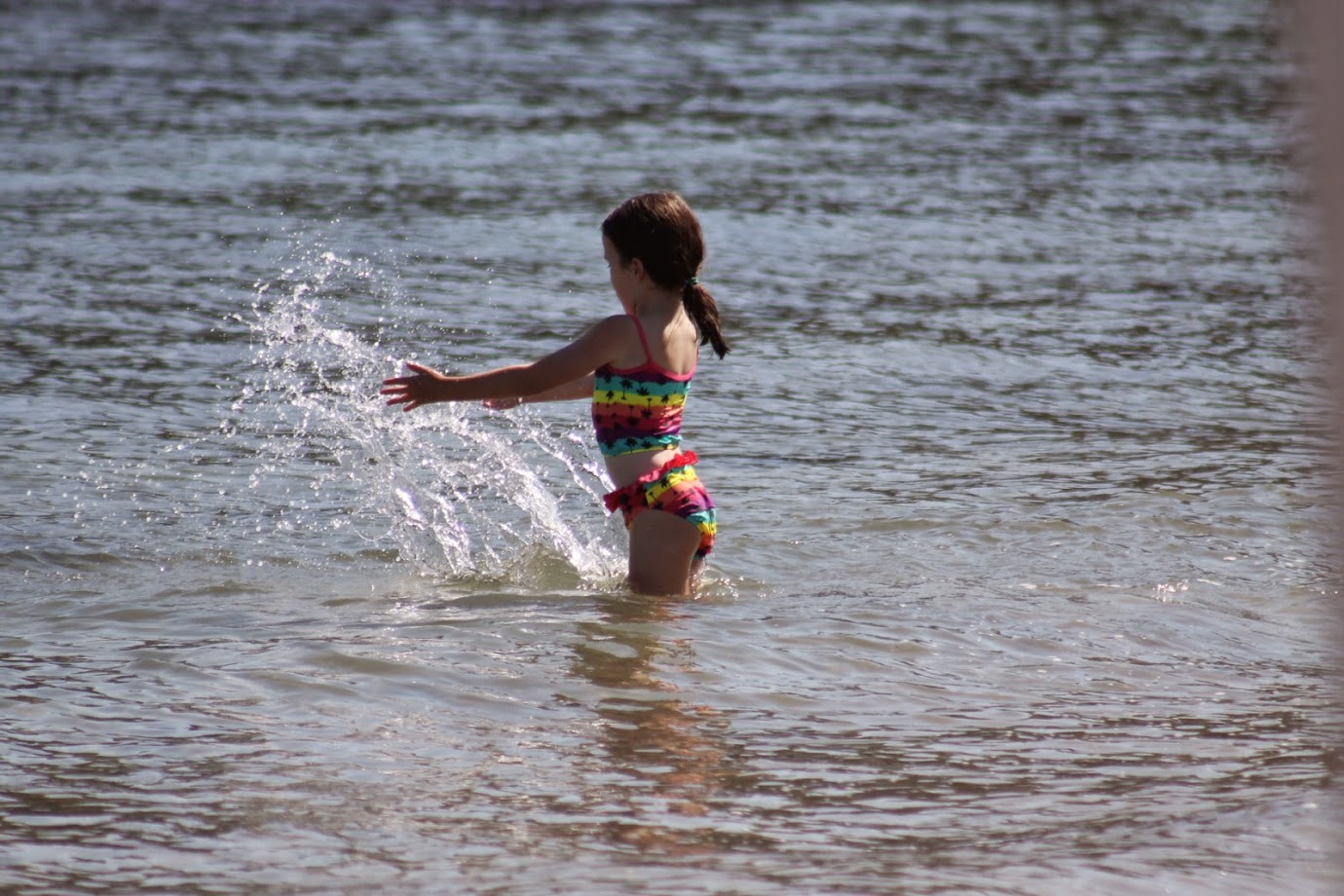
Inconvenient toddler swimming at Station Beach
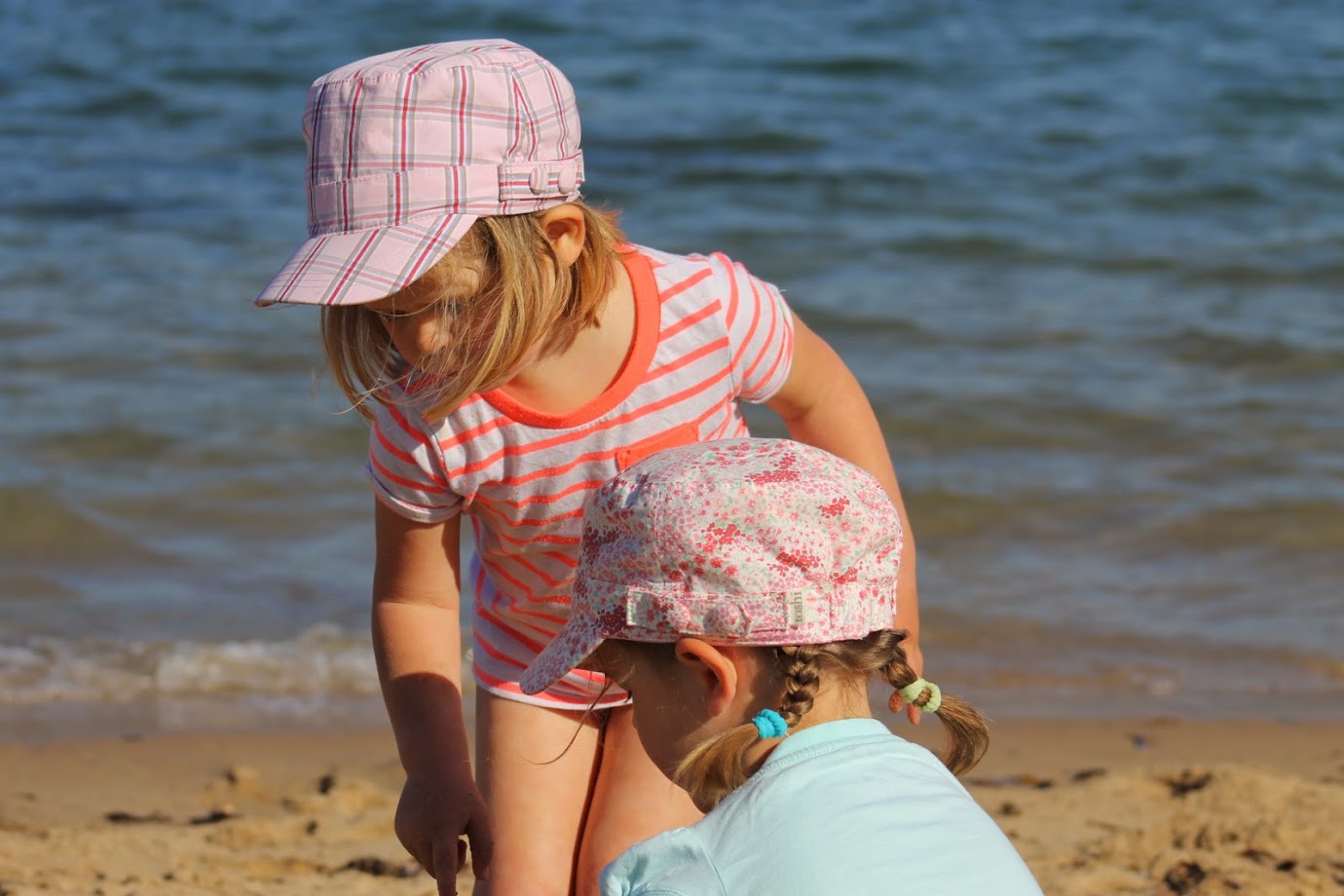
Inconvenient toddlers playing in the sand at Station Beach
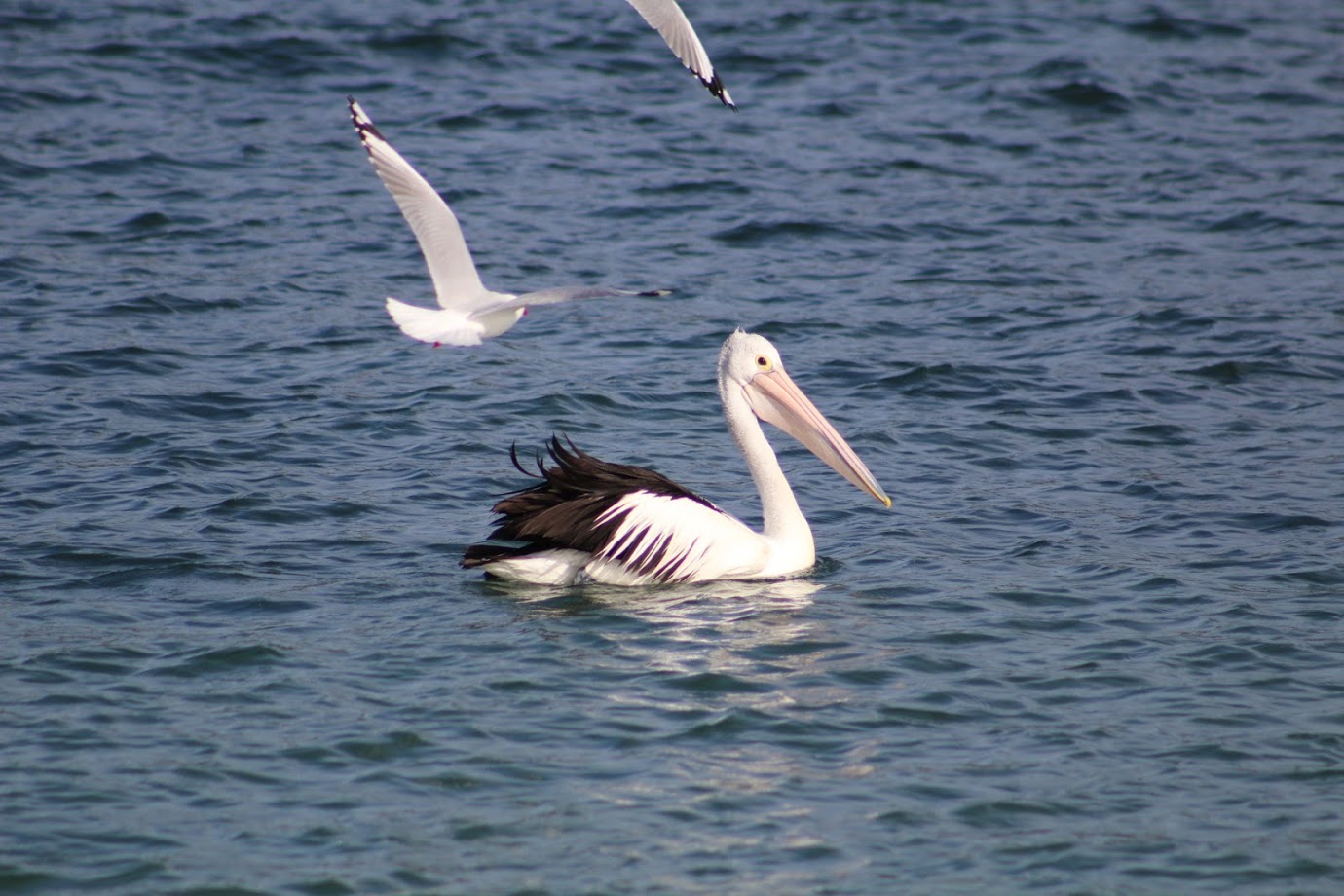
Inconvenient resident birds mucking about in their kitchen at Station Beach
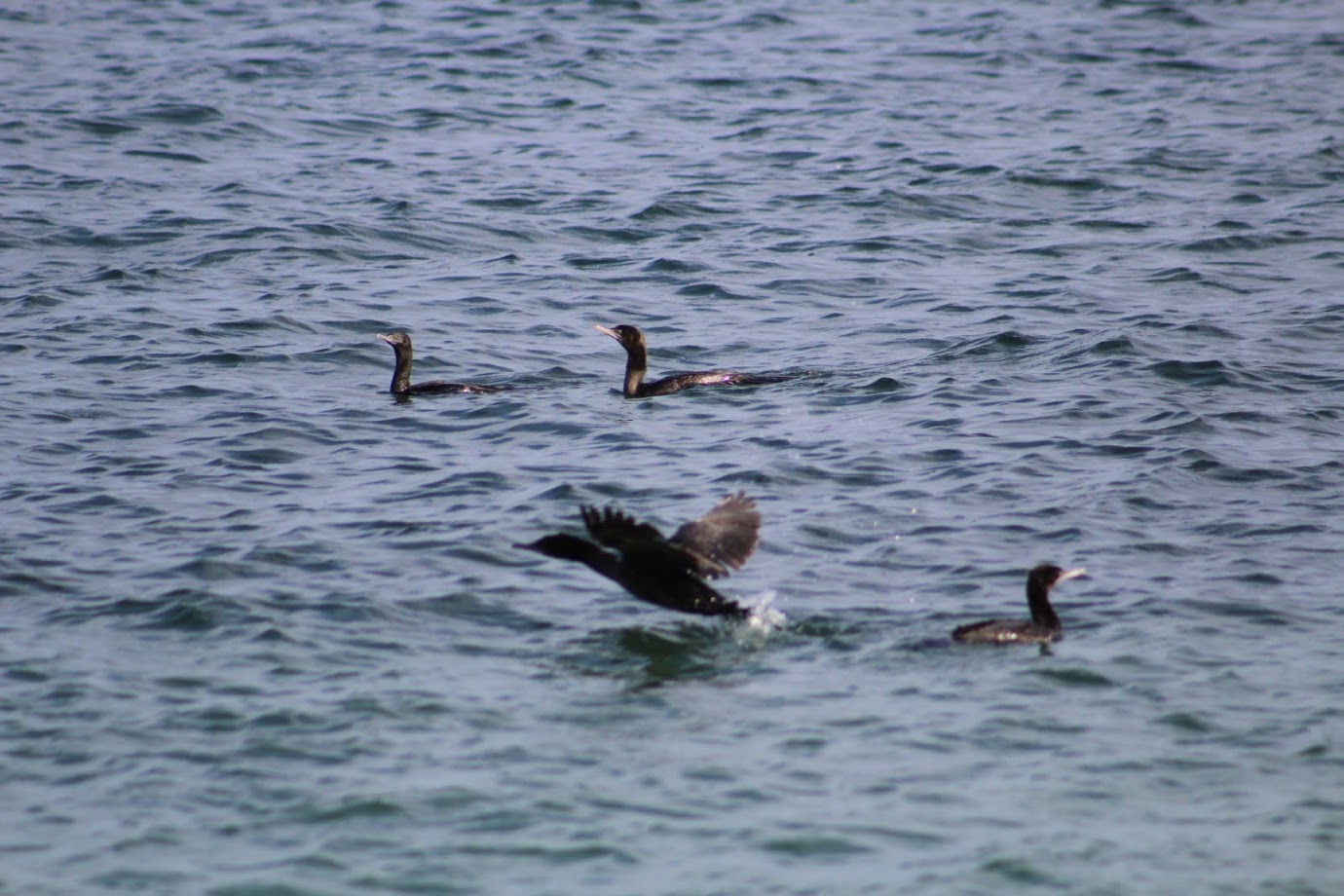
More Inconvenient resident birds mucking about in their kitchen at Station Beach
Inconvenient visitors, young children swimming, tourists taking photos and life savers training via Station Beach
The rising dog faeces tide here also brings up a point Barrenjoey fishermen swear is true - and once again, the research backs them up. During past weeks it has been opined by those out every day or weekend on the waters around Barrenjoey, off Station Beach and North Palm Beach that there is a growing instance of sharks being present - quite out of season.
The fishermen are attributing this to dog faeces too, stating dogs and dog scents and faeces attract sharks. As there have been many people seen walking their dogs off leash in the area, despite clear signage, in pictures, with words, that this is not a dog off-leash area or beach, and many have left their dog's leavings where deposited, the initial dismissal of this as 'fancy', or pointing out there are now seals on Barrenjoey headland and sharks love seals, was met with 'check it out'.
The numerous 'check it out' requests were elaborated on, one gentleman describing an instance a short way from here where a council had buried a whale carcass in the sand and the seepage, or run off through that sand was feared by residents to be attracting sharks - by its scent. A similar incident soon after the first brought the same response from the community - dig it up and move it.
The two councils did so - they did not want to lose the tourists that came to their beaches or put their community members at risk.
Can sharks smell?: Yes, apparently they do have a very keen sense of smell.
Should you swim with your dog or swim in an area a dog has been swimming?: No, apparently you should not.
As the Australian Museum researchers point out:
Sharks have the same five senses as humans; taste, touch, sight, hearing and smell, but in addition have a sixth sense; electroreception. The underside of the Grey Nurse Shark's snout is dotted with pores. Each of these leads to an organ (ampula of Lorenzini) which can detect electricity. Due to this sharks can detect very weak electrical currents. This extra sense gives sharks the ability to detect and attack prey at close range without needing to see the prey item. This can be advantageous in murky water or if the shark is a bottom feeder which relies on finding prey buried in the sediment.
There are numerous historical and current articles and studies that do back up the local fishermen's assertions, with Barrenjoey featuring in many of the older ones, as well as sharks getting far enough out of the water to take dogs.
Shark nets are on all Pittwater estuary pools for a reason and residents as far south in the estuary as Scotland Island recall many a shark seen cruising past a few decades ago, although much of those incidents of sightings have dropped with more activity and noise and with the runoff from sewage, which attracts bait-fish who in turn attract sharks, not being piped into the estuary anymore.
Many people have picked up a dried out shark egg on Station Beach over the years too, not just lately, so this area is clearly used as a nursery by the sharks:
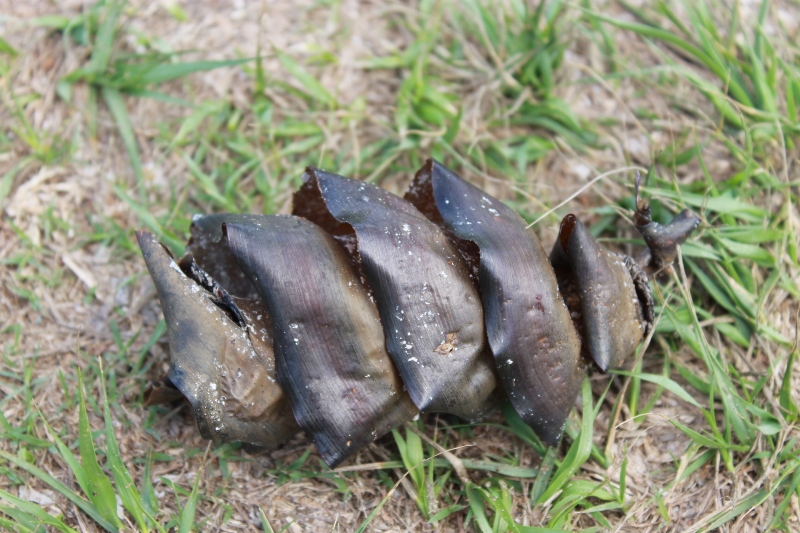
Shark Egg found on Station Beach in 2013
So there they are, the other voices; who aren’t screaming, who aren’t calling on others to deride, ridicule and attack others, who aren’t lingering outside people’s private homes alike stalkers, who aren’t taking their own dogs into areas they’re not supposed to be because they’re the home of the other animals that also live here, who aren’t failing to clean up after their pooches, who aren’t thinking that their wishes should override the millions of others – the visitors, the residents, the shorebirds, seals, penguins, sailors, paddlers, little children, wedding parties, tour guides and their tourists, the film crews and film makers.
We’re not living in the 1970’s anymore. We’re living in a place of increased resident population and increased tourist visitors – and that scale is only set to increase. The Responsible Companion Animal Act was created for those who have a problem shifting from a ‘me before everyone else’ mindset – it is Law, not guidelines.
And anyone who opposes having a beach excised, and thus excluding all others, has the right to be heard – without being attacked, without becoming the target of the overtly aggressive, without having their concerns dismissed as though they are the minority.
They are, in fact, the majority. By millions according to all statisticians as well as local government and state government counts on who came here, when and why.
The community calls for some sanity to be introduced into the off-leash discussion and having dogs prohibited areas observed and fines issued to those who grant themselves special dispensations, is reasonable and long overdue.
In an area that has thousands of people revelling in the beauty of here that should come as no surprise. Residents love our fauna, we’re determined to protect it and ensure generations to come get to see it where they live too. Visitors love this place for those same reasons.
People are weary of the ‘he won’t hurt you’ dog owners whose off-leash dog in a public space area just ran up to and frightened their child. We’re all sick of stepping in dog faeces on our shopping area footpaths, playing fields, bush tracks, beaches and all other public areas. Soon some may be sick from dog faeces infections if what has happened overseas happens here – and there’s no reason it would not, given the rising tide of dog doos.
Presently millions of visitors will be able to dive into it too apparently – at the world-famous, Internationally Renowned Palm Beach.
That’s right, you’re swimming in it.
And, apparently, here comes Mr. Shark…..
So thanks for all the photos of dog doo doos, people with dogs on our beaches and dog attacks listing where and when. If you forward these to your local government representatives, so they have these evidences too, they can be guided by your experiences and calls for help.
Their emails are HERE - just click on their names and that will take you to their bios and email addresses.

|
References Research for Correspodence on Dog Amok Tide August 2019.pdf Size : 1091.535 Kb Type : pdf |
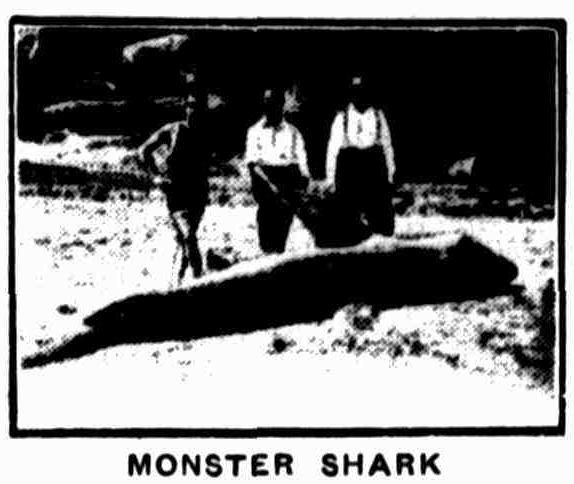
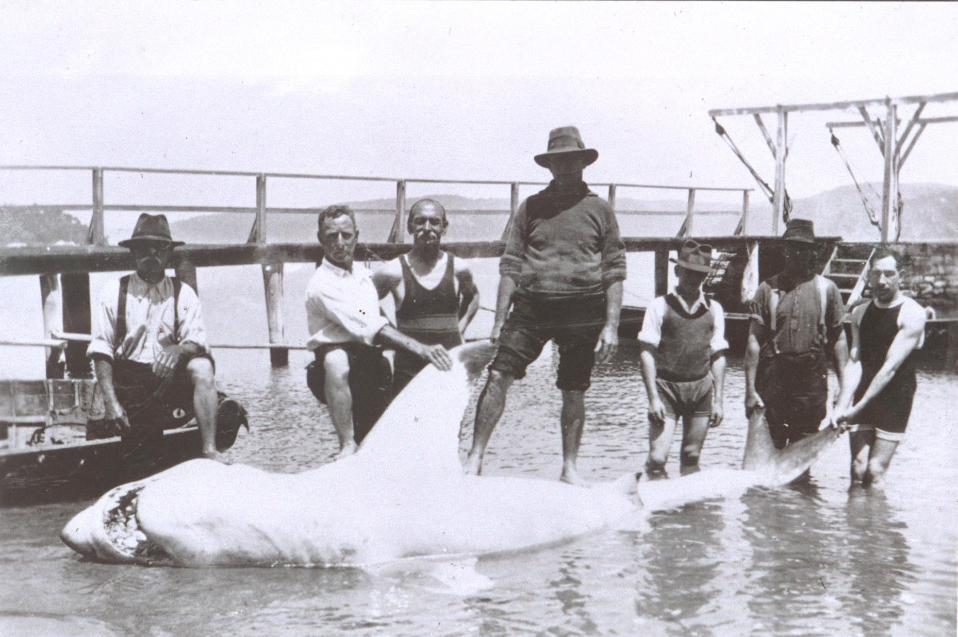
Launch Holed By Big Shark
SYDNEY: Attacked by a 16ft. shark, four men fought to stop their open launch sinking a mile off Barrenjoey Lighthouse, Palm Beach, yesterday. Robert Newton, Stan Prosser, Dan Blunt and Bill Linnert, all of Bondi Junction, were fishing. The boat was tilted before the shark struck and, after straightening up, they found the hole was just above the waterline. 'We used towels, shirts and everything we could lay our hands on to stop the boat filling,' said Newton. Launch Holed By Big Shark (1947, February 24). The Newcastle Sun(NSW : 1918 - 1954), p. 2. Retrieved from http://nla.gov.au/nla.news-article158248882